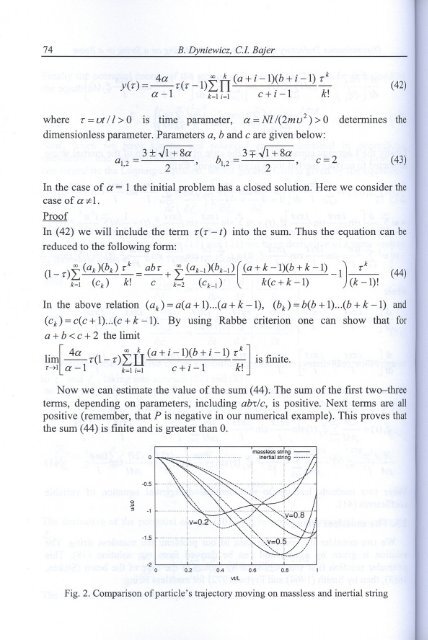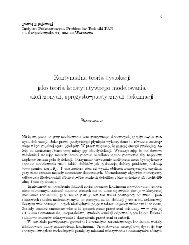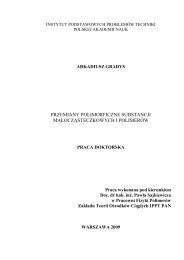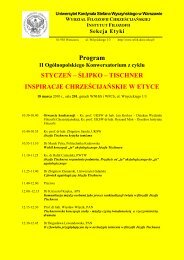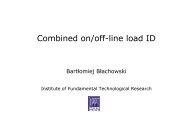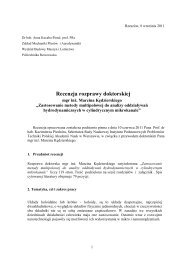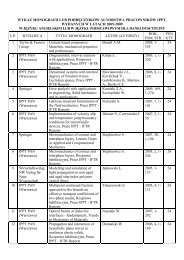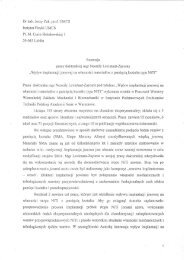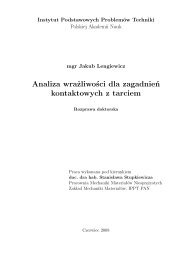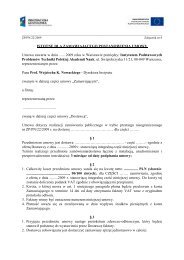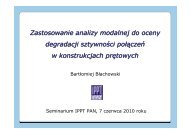Machine Dynamics Problems
Machine Dynamics Problems
Machine Dynamics Problems
Create successful ePaper yourself
Turn your PDF publications into a flip-book with our unique Google optimized e-Paper software.
74 B. Dyniewicz, Cil. Bajer<br />
y(r) =~r(r -1)I,fI (a + i -1)~b+ i-I) rk<br />
a-I k=1i=1 C + I -1 k!<br />
(42)<br />
where t: = vt / I > 0 is time parameter, a = Nl /(2mv2) > 0 determines the<br />
dimensionless parameter. Parameters a, band c are given below:<br />
a _3±~ b _3+~ c=2<br />
1,2 - 2 1,2 - 2 ' (43)<br />
In the case of a = 1 the initial problem has a closed solution. Here we consider the<br />
case of aot:1.<br />
Proof<br />
In (42) we will include the term r(t: - t) into the sum. Thus the equation can be<br />
reduced to the following form:<br />
(l_r)i;(ak)(bk) rk =abr + i;(ak-1)(bk-1)((a+k-l)(b+k-l) _l)_r_k_ (44)<br />
k=1 (ck) k! C k=2 (C k - 1 ) k(c+k-l) (k-l)!<br />
In the above relation (a k ) = a(a + 1)...(a + k -1), (b k ) = b(b + 1)...(b + k -1) and<br />
(c k ) = cCc + 1)...(c + k -1). By using Rabbe criterion one can show that for<br />
a + b < c + 2 the limit<br />
1· [4a (1 )~l1k (a+i-l)(b+i-l)rk ]. fi .<br />
un --r - t: L" IS Illite.<br />
r~l a-I k=1i=1 C + i-I k!<br />
Now we can estimate the value of the sum (44). The sum of the first two-three<br />
terms, depending on parameters, including abilc, is positive. Next terms are all<br />
positive (remember, that P is negative in our numerical example). This proves that<br />
the sum (44) is finite and is greater than O.<br />
·0.5<br />
0<br />
.§<br />
·1<br />
·1.5<br />
Fig. 2. Comparison of particle's trajectory moving on massless and inertial string<br />
v1IL


